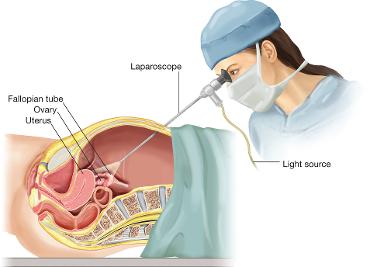Best Laparoscopic Gynaecologist in India
Laparoscopic supracervical hysterectomy or near-total laparoscopic uterus amputation received a wide acceptance in the previous year’s everywhere the world for treating benign uterine pathologies. This surgery is more often done to the young patients with cervical pathologies. The uterus removal is less damaging compared to uterus extraction, anyway it is less radical. The complication recurrence, including ureter wounds, is fundamentally lower. If you are looking for laparoscopic treatment contact Dr. Chaitasi Shah Desai, a laparoscopic treatmentcentre largely dedicated to Laparoscopic gynaecologist in India.

The supporters of supracervical laparoscopic hysterectomy highlight its following merits:
- Maintaining physiological and anatomical pelvic floor relations and preventive measures for genital prolapse in the future.
- Less complications compared to laparoscopic excision of the uterus
The first two assertions cannot be considered fully valid since there are many publications with absolutely opposite results. Nevertheless if there are no pronounced cervical pathological changes then it is reasonable to go through supracervical laparoscopic hysterectomy Laparoscopic supracervical hysterectomy has two serious drawbacks: the possibility of cervical stump malignancy and menstrual-like discharge after the surgery, which is found in 10 - 18 % of women.
Contra-indications for laparoscopic supracervical hysterectomy
- Big sizes of uterus (more than 16 weeks pregnancy)
- Anesthetic
- General laparoscopy contra-indications
Laparoscopic supracervical hysterectomy complications
Amid the laparoscopic supracervical hysterectomy the confusions, associated with endoscopy technique or directly with the surgery are technique. The confusions, typical for the supracervical laparoscopic hysterectomy: wounding urinary bladder and ureters, bleeding from the uterine vessels, hernia in the places the abdominal wall was cut in order to insert the trocar (empty metallic tubes), as per the opinions of many authors ureter, bladder and intestinal wounds are most often associated with the use of staplers.
Other authors portrayed the accompanying complications which arose from the use of endo-staplers: bladder, ureter and intestinal damage, post-operational bleeding and entanglements due to a broken instrument.
Preventive measures for ureter injury during supracervical laparoscopic hysterectomy
Iatrogenic ureteral damage is the most serious intricacy of the surgical gynaecology. The recurrence of this organ's damage amid various pelvic cavity surgeries is 0, 5-, 10 %. It is generally known about the danger of damaging the ureters amid the supracervical laparoscopic hysterectomy.
Amid endoscopic surgery the manual palpation of the ureter is incomprehensible that us why its perception is a mandatory part of the laparoscopic supracervical hysterectomy. The location of the ureter is found before the surgery procedure in the future the peritoneum becomes clouded. And the ureter peristalsis, which allows finding it, weakens. If the ureter is impossible to locate it is important to open the peritoneum and discover it in the behind the peritoneum space.
The prior hypothesis that leiomyoma of the uterus is a pre-menapuse illness prompt to the way that in the most cases by the time the diagnosis is made the myoma nodes reach big sizes. Such late conclusion usually leads to surgery such as laparoscopic supracervical hysterectomy.
The prior hypothesis that leiomyoma of the uterus is a pre-menapuse illness prompt the way that in the most cases when the conclusion is influenced the myoma hubs to achieve huge sizes. Such late conclusion as a rule prompts medical procedure, for example, laparoscopic supracervical hysterectomy.
© Copyright Best Gynaecologist India